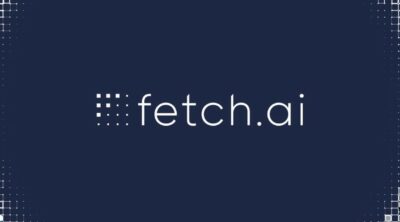Smart contract platforms have been one of the most highly contested topics in the crypto space. The competition among these platforms has been present for years now. Currently, Ethereum is leading this race (and by a large margin one may add). This platform though has many shortcomings. These shortcomings include limited throughput, as the platform can only process up to 30 transactions per second, an energy-intensive consensus algorithm, and uncertainty around its latest upgrade.
These shortcomings and future uncertainties about development has opened the door for competitors.
This post will review 3 projects promising new and unique improvement over Ethereum and other smart contract platforms.
(1) Hedera Hashgraph
Similar to IOTA, Hedera Hashgraph uses ‘Directed Acyclic Graph’ (DAG) technology. The difference between DAG and blockchain technology is that DAG requires no miners to confirm each transaction; network participants act as nodes instead of miners. With this technology, the team is trying to solve issues around Scalability, Security, Stability, and Governance.
Scalability wise Hedera boasts of being able to handle more than 10,000 transactions per second. The platform also reaches consensus within 3–5 seconds. During Hedera’s test net, the platform was able to reach a throughput of 50,000 transactions per second, far beyond what most, if not all, smart contract platforms are currently capable of.
Hashgraph’s consensus algorithm is ‘aBFT’ or asynchronous Byzantine Fault Tolerance. This algorithm is considered to be one of the most secure ways of providing consensus. It is impossible for any member of the network to halt community consensus, or change records after consensus has been reached.
The platform will also never fork. Any update to the network will be from the governing body and will only occur if agreed upon. Hashgraph’s patented technology makes a Bitcoin Cash type of hard-fork impossible.

Hedera also comes with two governance models. The first is the ‘Council Government Model,’ which is the overall governing body. The council is comprised of over 35 reputable organizations, which are spread across 5 continents. These organizations have a 2–3-year term and uphold the overall network.

The second model is the Consensus Model which allows anyone to run a node to help maintain consensus. These nodes are rewarded for their efforts.
Token Utility
Hashgraph’s native cryptocurrency, HBAR, has a few utilities on the platform. First, HBAR functions similarly to the Gas function on platforms such as NEO and is used to pay for computational power required to run a smart contract. HBAR is also used to file or transfer some cryptocurrency. Lastly, HBAR tokens can also be staked on the network.
Strengths and Weaknesses
Some strengths of the platform include:
- High throughput speeds
- Slow token release of the HBAR token over a 15-year release schedule starting
- Amore secure, less energy-intensive consensus algorithm
Some weaknesses of Hedera include:
- Less decentralization, as the governing body upholds the network
- A low circulating supply vs. total supply
- A low market cap when compared to other smart contract platforms
(2) Solana
Solana is a new blockchain platform that aims to solve scalability issues in the space without sacrificing decentralization or security. To that effect, the platform has eight (yes eight) key innovations. The eight innovations to its blockchain are (1) Proof of History (PoH), (2) Tower BFT, (3) Turbine, (4) Gulf Stream, (5) Sealevel, (6) Pipelining, (7) Cloudbreak, and (8) Archivers.

Binance lays out a great in-depth review of these key innovations, which can be found here. Core to Solana’s scaling solution is its new consensus algorithm called Proof of History (PoH). This new consensus algorithm doesn’t require all the nodes in the network to confirm transactions. The algorithm just requires that all nodes agree that a certain event, such as event A, took place before event B. Such a function establishes a single point of truth about the time a particular event occurred. Every event has a unique count that allows the network to know what event has come before another.
This video further explains how this consensus model works.
Token Utility
Solana’s native token, SOL, has similar functions to that of HBAR. Token holders can be rewarded by the platform for staking SOL tokens. The token is also used to pay for token transactions and smart contract executions on the network. Lastly, the token will be used in governance voting in the future.
Strengths and Weaknesses
Some strengths of the platform include:
- High throughput speeds that rival Visa
- A fully decentralized network, as any token holder, can validate transactions
- Pilot with Dish for 5G tokenization
- A very strong team of former Qualcomm developers
- Investors include Multicoin Capital
Some weaknesses of Solana include:
- Mainnet has not been launched yet (launch in Q3 of 2020)
- Unknown circulating supply and market cap. The price of the $SOL token has also dropped by almost 50% since being publicly traded
- Uncertainty about how the implementation of all these innovations will work
(3) Quant Network
Quant Network was created to face the issue of communication/interoperability between blockchains. The 3 goals of the projects are to (1) develop an interface to connect blockchains and networks, (2) bridge existing networks in industries like financial services to blockchains and (3) allow developers to create multi-chain applications on the Platform.
Overledger
Quant’s main project is Overledger. Overledger is the world’s first blockchain Operating System (OS). This OS connects not only blockchains to one another but also existing networks to a blockchain.
The image below further illuminates what this platform looks like. As can be seen, Overledger runs on top of the blockchain. It is a second layer that isolates the transaction layer from the message layer. The platform allows organizations to keep their existing infrastructure and connect to a blockchain. This is an important feature as many other projects are focused around moving an organization’s infrastructure to this new age of blockchain.

Another interesting fact about this network is that scalability is not a concern. The limiting factor of speed lies with the underlying blockchain, not Overledger itself. The team also has close ties with research networks such as Data61 and intend to integrate their blockchain to the network. This blockchain is documented at reaching speeds of up to 800,000 transactions per second.
Token Utility
Quant Networks native token, $QNT, has several interesting and well-though-out utilities. On the developer’s side, developers will be able to “obtain an annual license to develop apps on Overledger through the purchase of QNT tokens equivalent to a fixed FIAT amount.” These tokens are locked after purchase. This license must also be renewed by using only QNT. Consumption fees for reading and writing to Overledger is also made in QNT and is based on a FIAT value.
On the Enterprise’s side, enterprises will also be able to obtain an annual license to develop apps on Overledger. Consumption fees are also made in QNT.
QNT tokens are also used for security purposes. Every enterprise developer, user, and application validates each transaction using only QNT.
You can find a full review of all QNT’s utilities here.
Strengths and Weaknesses
Overall there is a lot to like about Quant Network. Some strengths of the project include:
- 4 major revenue streams in the course of its developments,
- Strong connections as Quant has connected to Hyperledger, Ripple, Ethereum, Corda, and Quorum to Overledger
- Flexibility to move to different ledgers if the underlying blockchain becomes too expensive or obsolete
- A long list of partnerships
- A very impressive team
Some weaknesses include:
- A long list of competitors from other top projects such as Aion, Polkadot and Cosmos
- Currently on a limited amount of good exchanges
- Reliance on an underlying blockchain
Recap
Overall, blockchain technology is still not ready for mainstream adoption, as there are still issues of scalability and ease of access to this new technology.
While these are two major issues, there is no shortage of innovation in this space. Many of these projects have some of the smartest minds coming together to make this new tech more accessible and efficient.
We have yet to see whether new technologies, such as those being implemented by Hashgraph and Solana, will succeed in the long term. We have also yet to see whether another smart contract platform will overtake Ethereum in this race.
Regardless of who will come out on top, we at Nicoya Research believe that there will likely not be just one winner. So some of these up-and-coming smart contract platforms could provide excellent opportunities for investors to buy in early before they become more mainstream.
Check out our Bitcoin and Ethereum price predictions by clicking here.
Get our top-rated cryptocurrency newsletter and our top crypto picks here.



